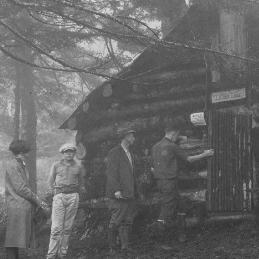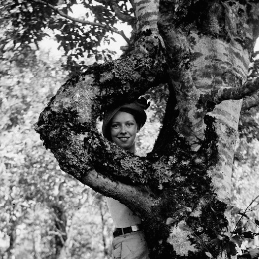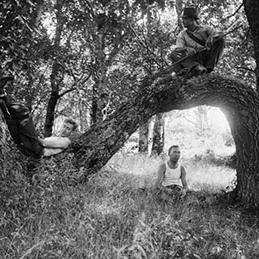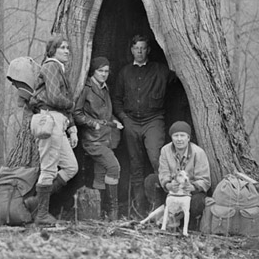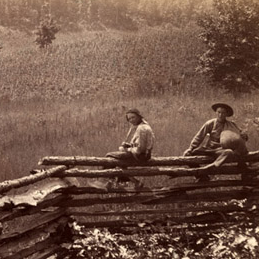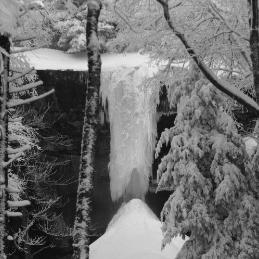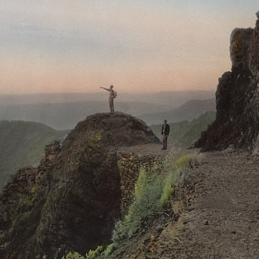Browse
Inventorying and Monitoring the Amphibians of Great Smoky Mountains National Park: Progress Report. U.S. Geological Survey, Florida Caribbean Science Center, 1998.
Human Visitation and Fall-Winter Cave Usage by Bats in the Great Smoky Mountains National Park In Final Report. National Park Service, 1979.
Historical Overview of Fisheries Studies and Sport Fisheries Monitoring Plan for Great Smoky Mountains National Park. Prepared in cooperation with Western Carolina University, Cullowhee, NC., and Uplands Field Research Laboratory, Great Smoky Mountains National Park, Gatlinburg, TN: National Park Service, 1984.
Habitat Modeling and Protection of American Ginseng (Panax quinquefolius L.) in Great Smoky Mountains National Park. Gatlinburg, TN: U.S. National Park Service, 1999.
Guidelines for Recreation Resource Development, Tennessee Portion, Great Smoky Mountains. Knoxville, TN: East Tennessee Development District, 1977.
Great Smoky Mountains National Park as a Biosphere Reserve: A Research/Monitoring Perspective In Research/Resources Management Report. Atlanta, GA: U.S. Department of the Interior, National Park Service, 1977.
Fraser Fir in the Great Smoky Mountains National Park: Its Demise by the Balsam Woolly Aphid (Adelges Piceae Ratz.). Knoxville, TN: Department of Forestry, University of Tennessee, 1978.
Foothills Parkway Section 8B Final Environmental Report: Volume 6, Appendix N; Cultural Resources Assessment. Oak Ridge, TN: Oak Ridge National Laboratory, 1999.
Foothills Parkway Section 8B Environmental Report: Volume 1. Oak Ridge, TN: Oak Ridge National Laboratory, 1999.
Final Environmental Impact Statement: North Shore Road. Volume 1. Washington, DC: National Park Service, 2007.
Final Environmental Impact Statement for the General Management Plan, Great Smoky Mountains National Park, North Carolina-Tennessee In NPS 1408A . Denver, CO: Denver Service Center, National Park Service, 1982.
Environmental Monitoring and Baseline Data Management Strategies and the Focus of Future Research in Great Smoky Mountains National Park In Research/Resources Management Report. Atlanta, GA: U.S. Department of Interior, National Park Service, Southeast Region, 1985.
Environmental Assessment of Campsite #87, Haw Gap In Environmental Assessment. Gatlinburg: National Park Service, 1980.
Environmental Assessment of Campsite #72, Whiteoak Branch In Environmental Assessment. Gatlinburg, Tennessee: National Park Service, 1980.
Environmental Assessment of Campsite #43, Mt. Chapman In Environmental Assessment. Gatlinburg, Tennessee: National Park Service, 1980.
Environmental Assessment for the Establishment of Elk (Cervus elaphus) in Great Smoky Mountains National Park. Gatlinburg, TN: Department of the Interior, National Park Service , 2009.
Environmental Analysis for "Quiet Walks" Along Little River Road, Laurel Creek Road, Newfound Gap Road and Clingmans Dome Road in Great Smoky Mountains National Park. Gatlinburg, TN: U.S. Department of Interior, National Park Service, 1978.
Environmental Analysis for Proposed Closure of Hyatt Ridge Tail. Great Smoky Mountains National Park, 1978.
Elkmont Historic District Preliminary Draft Environmental Impact Statement and General Management Plan Amendment: Appendices. Gatlinburg, TN: Great Smoky Mountains National Park, 2004.
Elkmont Historic District Final Environmental Impact Statement and General Management Plan Amendment. Gatlinburg, TN: Great Smoky Mountains National Park, 2009.
The Ecological Effects of Leconte Lodge in the Great Smoky Mountains National Park. Gatlinburg, TN: U.S. Department of the Interior, National Park Service, 1977.
Ease of Visitor Access and the Population Structure of Two Woodland Orchid Species in Great Smoky Mountains National Park: An Investigation of Possible Effects of Plant Poaching. Athens, GA: US National Park Service Cooperative Unit, University of Georgia, 1982.
Development Concept Plan Environmental Assessment, Deep Creek and Laurel Branch, Great Smoky Mountains. Denver, CO: Denver Service Center, 1984.
Cultural Resources Existing Conditions Report, North Shore Environmental Impact Statement, Swain and Graham Counties, North Carolina. Durham, NC: TRC Garrow Associates, Inc., 2004.
Cultural and Historic Landscape Assessment for the Elkmont Historic District, Great Smoky Mountains National Park, Sevier County, Tennessee. Durham, NC: TRC Garrow and Associates, 2004.












